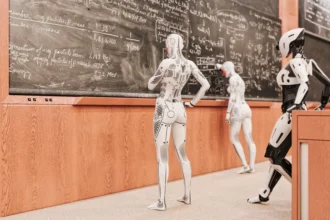Have you ever stood before a painting and wondered what makes it significant? Art has the power to evoke emotions, tell stories, and reflect cultural shifts, but understanding its deeper meaning requires more than just admiration. Whether you are a casual enthusiast or a dedicated learner, exploring art history can transform the way you engage with masterpieces from different periods and styles.
This is where online art history courses become invaluable. They provide structured insights, expert guidance, and interactive learning methods that help you interpret and appreciate artworks beyond their surface appeal. With flexibility in learning and a vast range of topics, these courses bring centuries of artistic development right to your fingertips.
Learn to Analyse Art with a Critical Eye
Art is more than just a visual experience; it conveys messages, techniques, and hidden details that can be uncovered through analysis. Online art history courses introduce you to essential concepts like composition, symbolism, and perspective. By learning how artists use colour, light, and form, you can start to see the deeper narratives embedded in their work. This approach enhances the way you view both classical and contemporary pieces.
Detailed art analysis also involves understanding techniques such as chiaroscuro, sfumato, and impasto. These methods affect the way paintings appear and influence how artists communicate themes. When you recognise these elements, you engage with artwork on a deeper level, moving beyond admiration to true appreciation.
Explore Diverse Art Movements and Styles
From Renaissance masterpieces to modern abstract creations, different art movements have shaped the way we perceive visual expression. The courses cover a wide spectrum of styles, allowing learners to explore everything from Baroque opulence to Minimalist simplicity. This structured exploration makes it easier to identify artistic influences and trends, helping you appreciate the evolution of creative techniques over time.
Understanding art movements also helps you differentiate between artists’ approaches. For instance, the fluid, emotional brushstrokes of Impressionism contrast sharply with the rigid, geometric forms of Cubism. Recognising these distinctions makes it easier to interpret an artist’s intent and the broader context of their work.
Understand the Cultural and Historical Context
Every artwork is a reflection of its time. The political, religious, and social factors that influenced artists are crucial to understanding their work. The courses provide in-depth discussions on how historical events shaped artistic trends, helping learners connect paintings, sculptures, and architectural marvels to the eras they belong to. This perspective adds layers of meaning to even the most familiar artworks.
For example, knowing the impact of the Industrial Revolution on artistic movements like Romanticism and Realism provides insight into why artists depicted certain subjects in specific ways. Similarly, the influence of global conflicts on 20th-century art movements, such as Dadaism and Surrealism, reveals how artists responded to social change through creative expression.
Improve Your Interpretation Skills for Museum Visits
Visiting museums or galleries can be a richer experience when you understand the principles of art history. Instead of simply admiring pieces for their aesthetic appeal, you can recognise artistic techniques, themes, and influences. Many online courses offer virtual tours and case studies on iconic collections, equipping learners with the tools to interpret artwork with confidence when viewing them in person.
Developing interpretation skills also enhances your ability to engage with contemporary art. Modern exhibitions often feature conceptual and experimental pieces that may seem abstract at first glance. However, with a solid understanding of art history, you can better grasp the ideas artists aim to communicate, making each visit more fulfilling.
Experience Art Through Interactive and Digital Learning
Online courses go beyond traditional textbooks by incorporating interactive learning methods. Virtual museum tours, high-resolution artwork analysis, and multimedia content help learners engage with art in new ways. These digital tools make it possible to examine brushstrokes up close, compare different artistic styles side by side, and access expert commentary on significant works.
Engaging with art through technology enhances visual literacy and analytical skills. Digital learning platforms also provide opportunities to explore global collections without geographical limitations, bringing iconic masterpieces into your personal study space. This approach transforms how learners connect with and interpret art in the modern age.
Online art history courses offer a gateway to seeing art through a more informed and enriched perspective. They not only enhance your knowledge but also refine your ability to interpret artistic elements with confidence. Whether you are admiring a painting in a museum, analysing a sculpture, or exploring digital collections, the skills gained from structured learning transform your experience. Art has the power to inspire, challenge, and connect, and deepening your understanding makes each interaction more meaningful.














